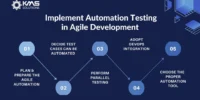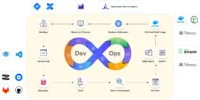The integration of Artificial Intelligence (AI) into agriculture is transforming the way we cultivate, manage, and optimize crop production. From precision farming to crop monitoring, AI offers a plethora of opportunities to enhance efficiency and sustainability in agriculture. In this quick guide, we’ll explore essential tips for implementing AI in farming solutions, ensuring a bountiful harvest of innovation and productivity.
Cultivate Data Insights: Sowing the Seeds of Smart Farming
Start by collecting and cultivating data about your farm. AI thrives on data, and the more information you provide, the smarter the insights. Gather data on soil health, weather patterns, crop history, and equipment performance. This foundational step sets the stage for informed decision-making and precise interventions.
Precision Farming Practices: Nurturing Crops with Pinpoint Accuracy
Implement precision farming techniques enabled by AI. Use sensors, drones, and satellite imagery to monitor crops at a granular level. AI algorithms analyze this data to provide insights into optimal planting times, irrigation needs, and nutrient management. Precision farming maximizes resource efficiency, reduces waste, and enhances overall crop yield.
Smart Pest Management: Shielding Crops with AI Vigilance
Utilize AI to monitor and manage pest infestations. AI-powered systems can identify pests and diseases through image recognition and sensor data. Early detection allows for targeted interventions, reducing the need for broad-spectrum pesticides. This not only protects the environment but also safeguards crop health and yield.
Predictive Analytics for Crop Yield: Forecasting the Harvest
Implement predictive analytics models to forecast crop yields. AI algorithms analyze historical data, weather patterns, and soil conditions to predict future yields. Accurate predictions enable farmers to make informed decisions regarding planting schedules, resource allocation, and market strategies, contributing to better financial outcomes.
Automated Harvesting and Sorting: Reaping the Benefits of AI Efficiency
Explore AI-driven automation for harvesting and sorting processes. Automated machinery equipped with computer vision can efficiently identify and harvest ripe crops. AI sorting systems can classify harvested produce based on quality parameters. This reduces labor requirements, improves efficiency, and ensures high-quality yields.
Blockchain for Supply Chain Transparency: Traceability from Farm to Fork
Integrate blockchain technology into your farming solutions for enhanced supply chain transparency. Blockchain ensures traceability by recording every transaction and movement of produce. Consumers can trace the journey of food from the farm to their plate, fostering trust and accountability in the agricultural ecosystem.
Continuous Monitoring and Learning: Cultivating AI Resilience
Establish continuous monitoring systems to track the performance of AI algorithms. Regularly update and refine your AI models based on new data and insights. The agricultural landscape is dynamic, and continuous learning ensures that your AI solutions adapt to evolving conditions, optimizing their effectiveness over time.
Collaborate with Agricultural Experts: Growing Knowledge Networks
Collaborate with agricultural experts, researchers, and technology partners. The synergy of domain knowledge and AI expertise enhances the development and implementation of farming solutions. By fostering collaborative networks, you tap into a wealth of knowledge that contributes to the success and sustainability of AI in agriculture.
Invest in Training and Adoption: Nurturing Farmer-Friendly AI
Invest in training programs to empower farmers with the knowledge and skills needed to leverage AI tools effectively. Promote the adoption of AI solutions by ensuring user-friendly interfaces and providing ongoing support. Farmer-friendly AI contributes to widespread adoption and the democratization of advanced farming technologies.
Conclusion: Harvesting the Future with AI in Agriculture
Implementing AI in agriculture is not just a technological advancement; it’s a transformative journey towards sustainable and efficient farming practices. By cultivating data insights, practicing precision farming, managing pests smartly, using predictive analytics, embracing automation, incorporating blockchain for transparency, fostering continuous learning, collaborating with experts, and investing in training and adoption, you’re sowing the seeds of a future where AI and agriculture harmoniously coexist. Let the fields of innovation and productivity flourish as AI becomes an integral part of the agricultural landscape.








